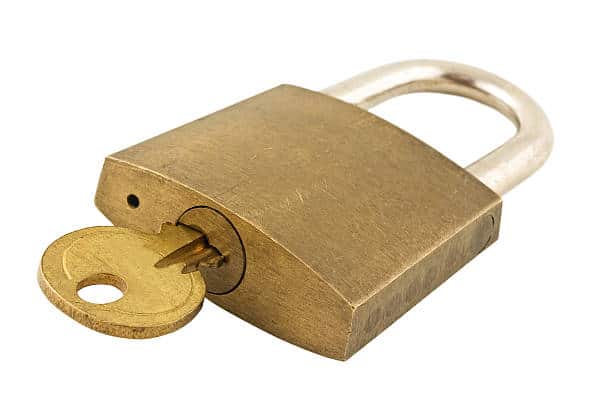Lock rekeying is a process that involves changing the internal components of a lock to make it work with a new key. This is different from replacing the entire lock, as rekeying allows you to keep the existing lock but renders the old key useless. The new key will be the only one that can open the lock. Lock rekeying is a common practice used in various situations, such as when moving into a new home, misplacing a key, or in cases where you want to enhance security. By understanding the process of lock rekeying, you can ensure the safety of your home and belongings. In this article, we will provide you with a step-by-step guide on how to rekey a lock.
Why rekeying a lock is important
Rekeying a lock is important for several reasons. Above all, it offers an extra degree of protection. When you move into a new home or lose a key, there is a risk that someone else may have a copy of the key and can gain unauthorized access to your property. By rekeying the lock, you eliminate this risk and ensure that only you have access to your home.
Rekeying a lock is also a cost-effective solution compared to replacing the entire lock. It saves you the expense of purchasing new locks and the hassle of installation. Additionally, rekeying can be done relatively quickly, allowing you to regain control over your home’s security in no time.
When to consider rekeying a lock
There are several situations where you should consider rekeying a lock. The most common scenario is when you move into a new home. Even if you receive a set of keys from the previous owner, it’s impossible to know who else may have copies. You may make sure that nobody else has access to your new house by rekeying the locks.
Another situation where rekeying is necessary is when you lose a key. If you’re unsure whether the key was misplaced or stolen, it’s best to err on the side of caution and rekey the lock. Similarly, if you’ve had a falling out with someone who had access to your home, such as a roommate or an ex-partner, rekeying the locks is a wise decision to prevent any unwanted entry.
The benefits of rekeying a lock
Rekeying a lock offers several benefits that contribute to the overall security of your home. It offers peace of mind first and foremost. Knowing that you are the only one with access to your home can alleviate any concerns about unauthorized entry. Rekeying also saves you the hassle of carrying multiple keys for different locks, as you can have all your locks rekeyed to work with a single key.
Another benefit of rekeying is that it allows you to upgrade your locks without replacing them. If you have older locks that are not as secure as newer models, rekeying them with high-security pins and cylinders can significantly enhance your home’s security. This is a cost-effective way to improve your home’s protection without the need for a complete lock replacement.
Step-by-step guide to rekeying a lock
Rekeying a lock may seem like a daunting task, but with the right tools and a step-by-step guide, it can be a straightforward process. Here are the five simple steps to rekey a lock:
Step 1: Gather the necessary tools
Before you begin the rekeying process, you’ll need to gather the necessary tools. These typically include a plug follower, a pinning tray, a set of pinning tweezers, a key decoder, a lock lubricant, and a new key set. Make sure you have all these tools readily available before starting.
Step 2: Remove the lock cylinder
To rekey the lock, you’ll need to remove the lock cylinder from the door. This can usually be done by unscrewing a retaining screw or by inserting the key and turning it to a specific position. Once the cylinder is removed, place it on the pinning tray.
Step 3: Remove the old pins
Using the plug follower, gently push the plug out of the cylinder. This will expose the bottom pins and springs. Use the pinning tweezers to remove the old pins and set them aside. Take note of the order and sizes of the pins, as this will be important when installing the new pins.
Step 4: Install the new pins
Using the key decoder, determine the sizes of the new pins needed for the new key. Insert the new pins into the corresponding chambers in the cylinder, following the order and sizes you noted earlier. Make sure the pins are flush with the shear line.
Step 5: Reassemble the lock
Once all the new pins are installed, carefully reinsert the plug into the cylinder. Turn the key to ensure the lock functions smoothly. Apply a small amount of lock lubricant to ensure proper operation. Finally, reinstall the lock cylinder into the door, and test the new key to make sure it works.
Tools needed for lock rekeying
To successfully rekey a lock, you’ll need a few essential tools. These include:
- Plug follower: This tool is used to push the plug out of the lock cylinder and keep the pins and springs in place.
- Pinning tray: A pinning tray is a small tray or container where you can organize and keep track of the pins and springs during the rekeying process.
- Pinning tweezers: These tweezers are designed specifically for handling the small pins and springs inside the lock cylinder.
- Key decoder: A key decoder is used to determine the sizes of the new pins needed for the new key.
- Lock lubricant: Lock lubricant is essential for ensuring smooth operation of the lock after rekeying.
- New key set: You will need a new set of keys to match the new pins installed in the lock cylinder.
Common mistakes to avoid when rekeying a lock
While rekeying a lock is a relatively straightforward process, there are some common mistakes that you should avoid:
- Mixing up the order of the old pins: When removing the old pins from the lock cylinder, it’s crucial to keep them in the correct order. Mixing up the order can result in a key that doesn’t work or a lock that doesn’t function properly.
- Installing the wrong size pins: Using the key decoder, make sure to accurately determine the sizes of the new pins needed for the new key. Installing the wrong size pins can lead to a lock that is difficult to operate or doesn’t work at all.
- Not lubricating the lock: After reassembling the lock, it’s important to apply a small amount of lock lubricant to ensure smooth operation. Skipping this step can result in a lock that is stiff or prone to sticking.
By avoiding these common mistakes, you can ensure that the rekeying process goes smoothly and that your lock functions perfectly with the new key.
Professional locksmith services for lock rekeying
If you’re not comfortable rekeying your own locks or simply prefer to leave it to the professionals, there are many locksmith services available that specialize in lock rekeying. Hiring a professional locksmith ensures that the job is done correctly and efficiently, giving you peace of mind knowing that your home is secure.
When choosing a locksmith, be sure to do your research and select a reputable and licensed professional. Look for reviews and recommendations from trusted sources, and ask about their experience and expertise in lock rekeying. By hiring a professional locksmith, you can save time and effort while ensuring the highest level of security for your home.
Conclusion
Rekeying a lock is a crucial step in maintaining home security. Whether you’ve moved into a new home, lost a key, or simply want to enhance your home’s security, rekeying allows you to control who has access to your property. By following the step-by-step guide and using the necessary tools, you can easily rekey a lock in just a few simple steps.
Remember to consider rekeying your locks whenever there is a change in occupancy and periodically to ensure ongoing security. Rekeying offers numerous benefits, including cost-effectiveness and increased peace of mind. If you’re not comfortable rekeying your own locks, don’t hesitate to hire a professional locksmith who specializes in lock rekeying.
Maintaining the security of your home is of utmost importance, and rekeying your locks is an essential part of achieving that goal. Take the necessary steps to protect your home and belongings by unlocking the secrets of lock rekeying.
Frequently Asked Questions
1. What is lock rekeying?
Lock rekeying is the process of changing the internal components of a lock to make it work with a new key. This is done to prevent unauthorized access by rendering the old key useless.
2. Why should I rekey a lock instead of replacing it?
Rekeying a lock is a cost-effective solution compared to replacing the entire lock. It saves you the expense of purchasing new locks and the hassle of installation. Rekeying can also be done relatively quickly, allowing you to regain control over your home’s security in no time.
3. How often should I think about getting my locks rekeyed?
It is recommended to rekey your locks whenever there is a change in occupancy, such as moving into a new home or when someone who had access to your home no longer does. Additionally, it’s a good idea to rekey your locks periodically to ensure ongoing security.
4. Can I rekey my own locks, or should I hire a professional locksmith?
While it is possible to rekey your own locks, it requires some knowledge and special tools. If you’re not confident in your abilities or want to ensure a professional job, it’s best to hire a reputable locksmith who specializes in lock rekeying.
5. How long does it take to rekey a lock?
The time it takes to rekey a lock can vary depending on the complexity of the lock and the experience of the person performing the rekeying. On average, it can take anywhere from 15 minutes to an hour to rekey a lock.


